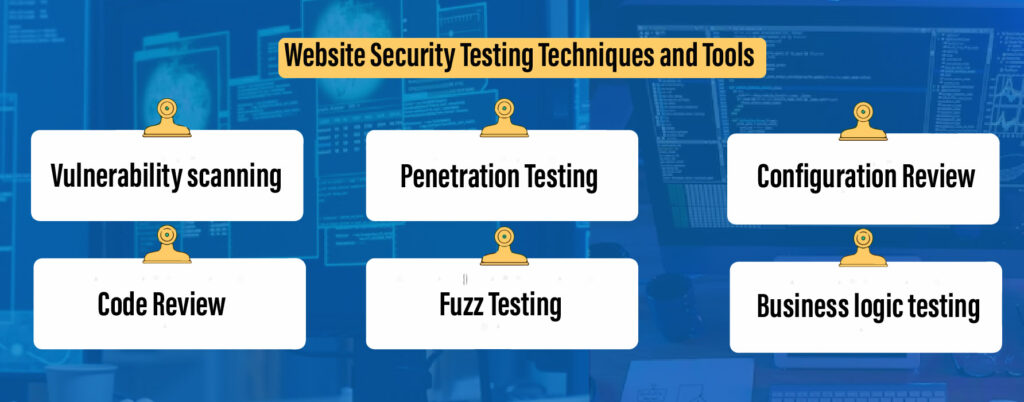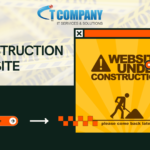
Table of Contents
ToggleIn the modern age of digital communication, protecting your online assets is critical. Our Website Security Tester allows you to execute complete site security testing with ease and precision. Discover how to properly build your defenses against cyber assaults. With our solution, you can easily manage the complexity of security testing, guaranteeing optimal safety for your website. With IT Company’s innovative solution, you can stay ahead of any risks while also providing peace of mind to yourself and your customers.
What is web security testing?
Website testing for security is the process of examining the safety features of a website or online application to identify any vulnerabilities, weaknesses, or defects that attackers may exploit. The purpose of website security testing is to safeguard the site’s confidentiality, integrity, and availability, protect sensitive data, and preserve user confidence.

Regular website security testing is essential for maintaining a secure online presence and safeguarding critical data from intrusion. It assists enterprises in identifying and addressing security risks, adhering to industry norms and standards, and preserving user confidence.
How Do You Execute Web Security Testing?
There are two primary ways to conduct online security testing: manual testing and automated testing. Both methodologies have advantages and disadvantages, and they are frequently used in conjunction to obtain complete testing coverage.
Manual Testing
Manual testing involves the use of human skill and intuition to detect vulnerabilities that automated techniques may overlook. The tester behaves like a user on the website, attempting to attack vulnerabilities by altering input fields, cookies, and HTTP requests.
Automated Testing
It is the process of using software tools to automatically examine a website for vulnerabilities and flaws. Automated tools may quickly discover common vulnerabilities, saving time and effort during testing.
Top Website Security Testing Methods and Tools
Website Security Tester follow several approaches for determining the security of a website or online application. These methods aid in detecting vulnerabilities, weaknesses, and faults that attackers may exploit. Some popular website security testing methods and tools include:

1. Vulnerability scanning:
Automated tools analyze websites for identified vulnerabilities, misconfigurations, or obsolete components. Vulnerability scanners can swiftly detect security flaws and offer remedial suggestions. Learn more in our comprehensive guide to website security scans.
2. Penetration testing:
This manual testing process involves security specialists simulating real-world assaults on a website or online application in order to find vulnerabilities and flaws that automated methods may overlook. Penetration testing usually combines vulnerability exploitation, hacking, and other attack approaches.
3. Code Review:
Developers manually evaluate a web application’s source code to identify potential vulnerabilities or opportunities for improvement. Code reviews may help verify that best practices are followed and that appropriate input validation, error handling, and encryption techniques are in place.
4. Fuzz tests:
This approach includes sending unexpected, erroneous, or random input data to a web application in order to test its resilience and uncover vulnerabilities or failures. Fuzz testing can help identify bugs like buffer overflows, memory leaks, and input validation flaws.
5. API Testing:
API integration is critical to any security testing regimen, particularly for online applications that rely on APIs. Our API integration goes beyond traditional security measures by identifying vulnerabilities such as unsecured data disclosure, authentication procedures, and access control problems. By seamlessly incorporating API testing into your security processes, you strengthen your online infrastructure against possible attacks.
Website Security Testing Best Practices in 2024

- Prioritize cross-browser compatibility testing. A cross-browser test of compatibility is critical for website security testing since various browsers may interpret the site’s code differently, potentially leading to security concerns. A website that is secure in one browser may be vulnerable in another.
- Adopt Risk-Based Testing: Risk-based testing focuses on finding and mitigating the most serious vulnerabilities and threats. This method entails evaluating the likelihood and possible effect of each vulnerability in order to prioritize testing efforts, ensuring that the most serious risks are addressed first.
- Conduct Penetration Testing: Penetration testing, sometimes called hacking with ethics or pen testing, is an important recommended practice for website security assessment. It entails simulating real-world attacks on your website or online application in order to detect vulnerabilities and flaws before hostile hackers exploit them. Regular penetration testing allows you to identify security risks that automated tools or manual testing may have overlooked and take proper action to fix them.
Conclusion
In the modern digital age, protecting your online assets is critical. Our Website Security Tester allows you to easily do thorough site security testing, assuring maximum protection against cyber attacks. With our smart solution, you can stay ahead of the dangers and provide yourself and your customers with peace of mind. IT Company’s trusted security experience will help you strengthen your defenses and reinforce your online presence.
Security updates.
Updates may include plugins and themes, as well as content.
Backup and recovery after a disaster.
Tracking performance and optimization.
Security scans.
User management.
Accessibility testing.
Check that each of your pages load without problem.
Make a backup of your site and ensure that it has a prior version.
Make upgrades to website software and plugins.
Verify that all of your forms are functioning properly.
Remove all spam comments from pages and postings.
To design a winning website, follow these five steps:
Define your website’s aims. When you begin the website design process, create a creative brief stating the website’s aims.
Plan your website’s design approach.
Create and construct the new website.
Test your website.
Launch and manage your new website.





